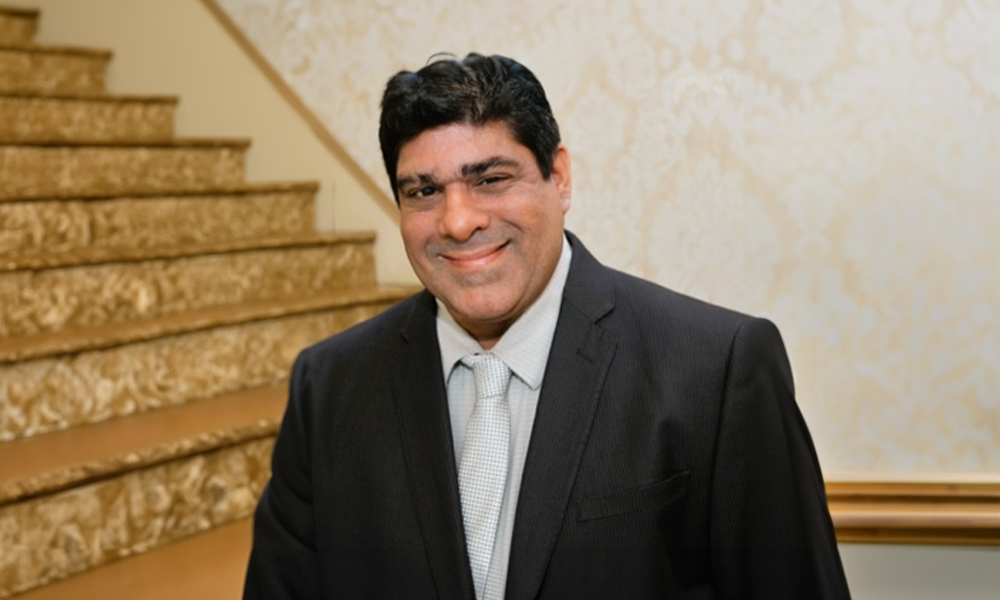Even with marquee statewide races that have little suspense, three out of five Democratic likely voters in Massachusetts say they are more enthusiastic than usual about voting in the Nov. 6 midterm election, according to the latest survey from the Western New England University Polling Institute.
The telephone survey of 402 likely voters, conducted Oct. 10 through 27, found that nearly half of those voters – 49 percent – said they are more enthusiastic about voting than usual, while four percent said less enthusiastic and 46 percent said they felt about the same as in past elections.
Among likely voters who said they are registered as Democrats, 60 percent said they are more enthusiastic about voting than usual, while the same was true for 48 percent of Republicans and 42 percent of unenrolled voters.
The survey also found:
- In the race for governor, Republican incumbent Charlie Baker holds a wide lead over Democrat Jay Gonzalez among likely voters, 65 percent to 27 percent, with seven percent undecided.
- In the race for U.S. Senate, Senator Elizabeth Warren, a Democrat, leads Republican State Representative Geoff Diehl by a margin of 57 percent to 27 percent, with seven percent of voters backing independent Shiva Ayyadurai and eight percent undecided.
- President Donald Trump remains deeply unpopular in Massachusetts, with a job approval rating of 25 percent among registered voters, compared to 67 percent for Baker and 55 percent for Warren.
- Massachusetts voters are not enthusiastic about a potential presidential bid by Elizabeth Warren in 2020, with 56 percent saying Warren seeking the White House would be a bad idea, 27 percent saying it would be a good idea, and 17 percent unsure or declining to answer the question.
- Recent political activism is higher among Democrats than Republicans in the state when it comes to attending a rally, protest or campaign event, or trying to persuade family or friends to back a candidate or party. Democrats were slightly more likely than Republicans to volunteer for campaigns and to express their political views on Facebook, Twitter, or other social media. Similar percentages of voters in both parties said they donated money to candidates and political groups recently.
- Interest in the Nov. 6 election is higher compared to previous midterm elections as measured in past Polling Institute surveys. Among the sample of 485 registered voters, 70 percent said they have a lot of interest in the 2018 midterm election, compared to 51 percent of registered voters surveyed ahead of the 2014 midterm election and 58 percent of voters surveyed before the 2010 midterm election.
Tim Vercellotti, director of the Polling Institute and a professor of political science at Western New England University, said that the level of voter interest in the 2018 midterm election is closer to that of a presidential election. For example, ahead of the 2012 presidential election, the Polling Institute found that 82 percent of registered voters in Massachusetts said they had a lot of interest in that year’s election.
“Voters seem to be fired up this year,” Vercellotti said.
While Democrats lead in enthusiasm about voting in 2018, similar percentages of registered voters in both parties said they have a lot of interest in the election – 80 percent among Democrats and 81 percent among Republicans, compared to 64 percent among unenrolled voters.
The high levels of interest and enthusiasm among Massachusetts voters exist even though there is little suspense about the top two statewide races on the ballot. The Polling Institute survey found that Baker, who is completing his first term as governor, leads Gonzalez, a health care executive, across all demographic and partisan groups. Among Democratic likely voters Baker holds a 54 percent to 41 percent lead over Gonzalez, while 85 percent of Republicans and 67 percent of unenrolled voters said they support Baker.
Warren also holds a significant lead in her bid for a second term in the U.S. Senate. But voter sentiment is highly polarized in the Senate race. Eighty-four percent of Democratic likely voters said they support Warren and 78 percent of Republican likely voters said they back Diehl, who chaired Donald Trump’s presidential campaign in Massachusetts in 2016. Warren leads Diehl by a margin of 47 percent to 29 percent among unenrolled likely voters.
Voter preferences in the election mirror the job approval ratings for Baker and Warren. Baker’s job approval among likely voters is 70 percent, and is consistent across party and gender lines. Warren’s job approval among likely voters is 59 percent, with 85 percent of Democrats approving and 83 percent of Republicans disapproving. Warren’s job approval among female likely voters is 65 percent, compared to 51 percent among male likely voters.
Trump’s 25 percent job approval among registered voters in Massachusetts in the latest survey represents a slight improvement compared to a year ago, when a Polling Institute survey found that only 19 percent of voters approved of the job Trump was doing as president. Partisan and gender differences were significant in the most recent survey, with only eight percent of Democrats approving of Trump, compared to 70 percent of Republicans and 28 percent of unenrolled voters. Male voters were almost twice as likely as female voters to approve of Trump, by a margin of 33 percent to 18 percent.
While a majority of voters approve of the job Warren is doing in the Senate, 56 percent of voters said that a potential Warren bid for president in 2020 is a bad idea, with only 27 percent saying it is a good idea. The percentage holding a negative view is similar to findings in a Polling Institute survey from April 2015, when some Democratic Party activists were urging Warren to challenge Hillary Clinton for the Democratic nomination for president in 2016. In the April 2015 survey, 57 percent of Massachusetts voters said Warren running for president was a bad idea, while 32 percent said it was a good idea.
Sentiment about a Warren presidential candidacy in 2020 varied by party, but in each case a majority expressed a negative view. Fifty-three percent of Democrats, 71 percent of Republicans, and 55 percent of unenrolled voters said it is a bad idea. Even among voters who approved of the job Warren is doing in the Senate, 49 percent said running for president is a bad idea, while 31 percent said it is a good idea. Support for Warren seeking the presidency was higher among younger voters ages 18 to 39, with 39 percent calling a potential candidacy a good idea and 43 percent saying it is a bad idea. Support was evenly divided among voters in the lowest annual household income category, under $35,000, with 39 percent saying Warren running for president would be a good idea and 38 percent saying it would be bad idea. Voters with some college education also were evenly split, with 44 percent saying good idea and 47 percent saying bad idea.
In a follow-up to the Warren presidential candidacy question Polling Institute interviewers asked survey respondents to explain their answers in a sentence or two. The most frequent reasons voters gave for saying a Warren candidacy would be a bad idea was that they thought Warren is too liberal to run (22 percent), she can’t win (18 percent), or that they do not like Warren or her issue positions (17 percent). Eight percent said they like the job Warren is doing in the Senate and that they prefer that she continue to serve there.
Among voters who said Warren running for president would be a good idea, the top reason given was that she has good ideas and is sincere (25 percent), and that she could provide competition for Trump and defeat him (18 percent). Critics of Warren said they thought her running for president would be a good idea because they think she would lose (15 percent).
Eleven percent of respondents who answered “good idea” said they want a woman to run for president. Four percent of respondents who said “bad idea” said the country is not ready to elect a woman president.
“Voters are offering a wide variety of reasons for why they would or would not like to see Elizabeth Warren run for president,” Vercellotti said. “Views on a Warren presidential candidacy cut across support for or opposition to Warren. Some detractors say this is a good idea and some fans of Warren express concern about her wider appeal nationally or prefer that she continue to serve in the Senate.”
In the latest survey, the Polling Institute also measured whether voters had engaged in five types of political activity over the previous 12 months and found varying levels of participation:
- 26 percent of voters said they had attended a political rally, protest, or campaign event
- 15 percent said they had volunteered for a political party, candidate or campaign
- 28 percent said they had donated money to a candidate running for public office or a group working to elect a candidate
- 42 percent said they had tried to persuade a family member or friend to support a candidate or a political party
- 34 percent said they had publicly expressed support for a candidate, elected official, or political party on Facebook, Twitter or other social media
METHODOLOGY
The Western New England University Polling Institute conducted a telephone survey using live interviewers Oct. 10 – 27, 2018. Western New England University sponsored and funded the study. The survey sample consists of telephone interviews in English only with 525 adults ages 18 and older drawn from across Massachusetts using a combination of a random sample of listed telephone numbers for households and random-digit-dialing of cell phones. The sample yielded 485 adults who said they are registered to vote in Massachusetts, and 402 adults who indicated they are likely to vote in the Nov. 6, 2018 election. Likely voters were identified in one of two ways: (1) Eighteen voters in the sample said they had already voted early or by absentee ballot and thus were counted as part of the subsample of likely voters. (2) Individuals who had not yet voted at the time of the phone interview were classified as likely voters based on their responses to questions about interest in the upcoming election, likelihood of voting in the election, and knowledge of the location and name of their polling place.
Interviewers at the Polling Institute used random samples obtained from Survey Sampling International of Shelton, CT. In order to draw a representative sample from the landline numbers, interviewers alternated asking for the youngest adult male or the youngest adult female age 18 or older who was home at the time of the call. Interviewers dialing cell phone numbers interviewed the respondent who answered the cell phone after confirming three things: (1) that the respondent was in a safe setting to complete the survey; (2) that the respondent was an adult age 18 or older; and (3) that the respondent was a resident of Massachusetts. The sample of all adults consisted of 283 interviews completed on landlines and 242 interviews completed on cell phones. The landline and cell phone data were combined and weighted to reflect the adult population of Massachusetts by gender, race, age, and county of residence using U.S. Census estimates for Massachusetts. The data also were weighted to adjust for cell phone and landline usage based on state-level estimates for Massachusetts from the National Center for Health Statistics and to adjust for voter registration by party using figures from the office of the Massachusetts Secretary of the Commonwealth. Complete results of the poll and the full text of the landline and cell phone versions of the survey are available at http://www1.wne.edu/polling-institute/index.cfm.
All surveys are subject to sampling error, which is the expected probable difference between interviewing everyone in a population versus a scientific sampling drawn from that population. The margin of sampling error for a sample of 485 registered voters is +/- 4 percent at a 95 percent confidence interval, and the margin of sampling error for a sample of 402 likely voters is +/- 5 percent at a 95 percent confidence interval. Thus if 65 percent of likely voters said they approve of the job that Charlie Baker is doing as governor, one would be 95 percent sure that the true figure would be between 60 percent and 70 percent (65 percent +/- 5 percent) had all likely voters in Massachusetts been interviewed, rather than just a sample. Sampling error increases as the sample size decreases, so statements based on various population subgroups are subject to more error than are statements based on the total sample. Sampling error does not take into account other sources of variation inherent in public opinion studies, such as non-response, question wording, or context effects.
Established in 2005, the Western New England University Polling Institute conducts research on issues of importance to Massachusetts and the region. The Institute provides the University’s faculty and students with opportunities to participate in public opinion research. The Institute is a charter member of the Transparency Initiative, sponsored by the American Association for Public Opinion Research. The Transparency Initiative supports greater openness in the reporting of survey research methodology. Additional information about the Polling Institute is available from Dr. Tim Vercellotti, director of the Polling Institute, at polling@wne.edu.





